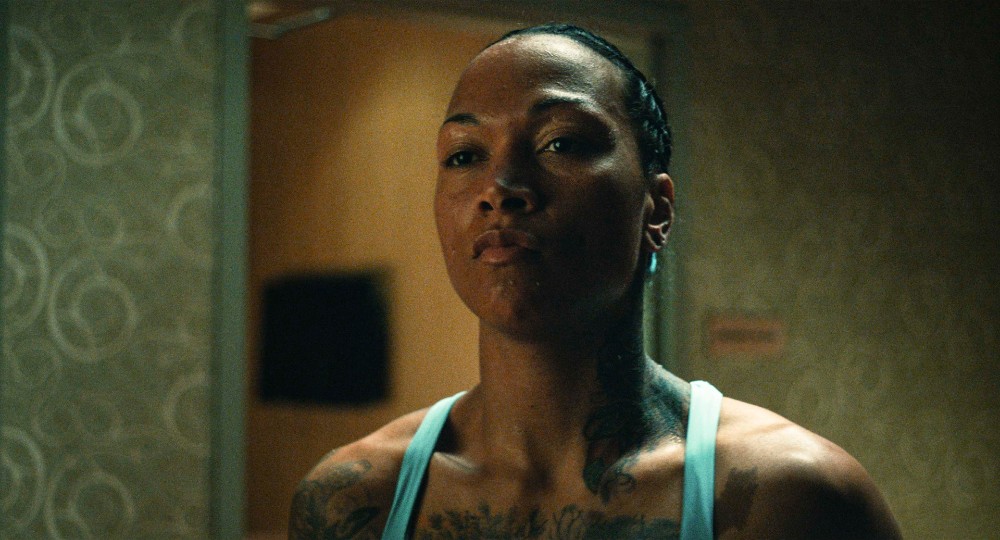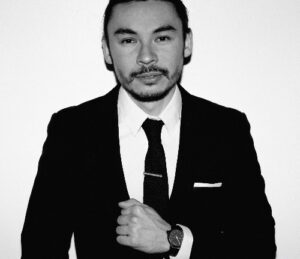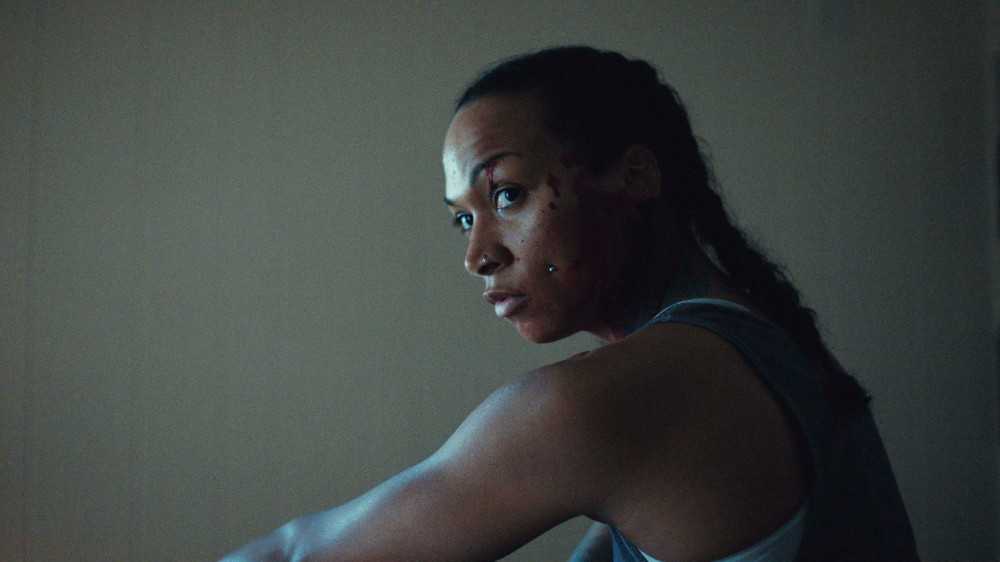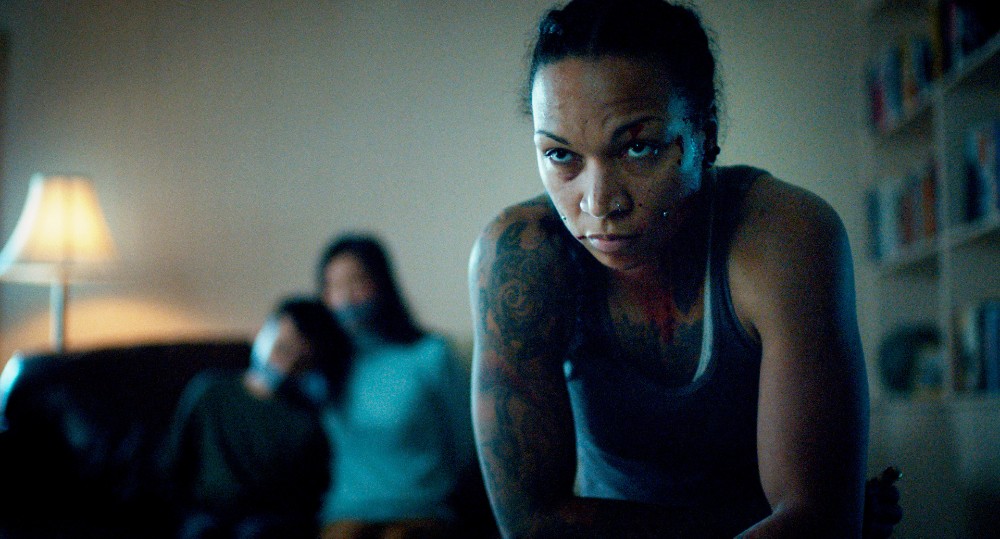
Josef Kubota Wladyka’s Catch the Fair One is a pretty special film, co-written and starring real-life boxer Kali “KO” Reis, though it’s not exactly a boxing movie, per sé. Instead, Reis stars as Kaylee, an indigenous boxer who has been looking for her missing younger sister. Going off on her own investigation, Kaylee comes into contact with several seamy people and situations, ultimately uncovering a sex-trafficking ring in the process.
Wladyka is an excellent filmmaker, and the stark and moody Catch the Fair One is only his second feature film, as he has been busy directing television shows such as Narcos and The Terror since making his feature debut with Dirty Hands back in 2014. Wladyka also comes from a strong film pedigree, having gone to school with a couple of recent Oscar winners and nominees such as Chloé Zhao, Shaka King, and his own film’s producer, Mollye Asher. His script and premise for Catch the Fair One also caught the eye of Darren Aronofsky, who in a coup of sorts, came aboard as an executive producer along with his company, Protozoa Pictures.
Below the Line sat down with Wladyka last year during the 2021 Tribeca Film Festival, though we agreed to hold this interview until Catch the Fair One hit theaters, so keep in mind that this was one of the first in-person interviews that either of us did since the pandemic began.

Below the Line: I’ve read that you met Kali [aka “KO”] and built this around her, so can you talk about how you met her and how you got started on this project together?
Josef Kubota Wladyka: I first met her in 2017 through the love of boxing, and learning, and starting to study boxing myself. My friend, he had a boxing gym that he had opened, and through social media, I found this boxing gym, [and] I found KO. I was immediately drawn to her, because she’s a world-class boxing champion, so on [and] so forth, but as an artist, as an activist, she really uses her platform to speak out on the stuff that she cares about, because I’m a filmmaker that’s trying to do the same thing.
She’s in Providence, so I borrowed my friend’s car, took a camera, went up there, started just hanging out with her. I just wanted to hang out with her and get to know her a little bit. At the time, she was training for a fight, so I went with her to Big 6 Boxing, which is our typical, hot, sweaty, jacked-up guys boxing gym. She was doing her routine, she’s doing her boxing, starting up her stuff. And then some guys start talking junk, she takes out her piercings, puts on her headgear and gets in the ring, and starts sparring them.
BTL: Does she normally fight guys?
Wladyka: No, no. When she spars, yeah, but in her career, she boxes women. She’ll spar with dudes all the time [though]. In this moment, it was an inexplicable thing as a filmmaker of, ‘there’s some power here.’ I was there with my little DSLR, and I was like, ‘There’s something really powerful about bringing this truth to power to the screen.’ One thing that Kali and I had talked about [was] this. She often advocates for and brings attention to the platform of [the] missing and murdered indigenous crisis in North America. At the time, I was also learning about it, and I was reading up on it as well. We started to think of [the] idea of making a film together.
We both have siblings, and we’re both the youngest of our siblings, and we’ve had older brothers that kind of raised us. The idea of siblings is very important to us, so we started to build around the idea of a woman searching for her sister. That was sort of the base of it that we initially started working off of, and then, over the course of two years, preparing her to act in it, but also working on the story, creating the characters, thinking of the world. It was a constantly-in-flux collaboration, up until we shot right at the end of 2019, right before the pandemic. We got it in, a week before.
BTL: The way you shot the movie makes it feel very authentic, as if it’s something that could really happen, and may even be happening as we speak. What kind of research did you do, other than spending time with Kali?
Wladyka: Kali is an activist herself. She travels around the reservations and gives talks. She spoke at the VAWA (Violence Against Women’s Act) in 2018. She has met people that have lost loved ones, that have gone out and searched for them, so we were constantly using what she was learning and discovering to inform the story as well, while me also reading and researching and doing all the deep dive. The thing is that what she really enlightened me to is just how far back into our history, this really goes deep into, just in terms of the way indigenous people were treated from first contact. So there’s a residue of that still in today’s world, and she really helped inform me with that. She also has worked with at-risk youth so she’s dealt with, first-hand, girls that have specifically gone through trafficking and stuff like that. It was getting her perspective and insights and bringing it into the story and constantly working on it as she was traveling and learning, we’re both researching.
BTL: You shot this in Buffalo, so how did you find locations up there and what were some of the benefits of shooting in Buffalo versus somewhere else?
Wladyka: The vibe of Buffalo, we wanted to build off the idea of absence and loss, and a faded memory, and Buffalo had that Rust Belt kind of feeling to it. Also, there’s an incentive to drive up there. There’s an indigenous community there, and we worked with Pete Johnston, a local casting director, to help us cast up there as well, because we knew we wanted to represent some of the Northeast women tribes in the film, because that’s where Kali’s from. And then, we worked with this location scout, Bobby Gott, he’s the guy in Buffalo, and we hit the ground and just started looking for locations. Some stuff came easy, but some stuff, we had to do some digging to find the right places, but he did great.

BTL: How long did it take you to shoot this? What was the schedule like?
Wladyka: We shot it in 20 days, really fast. The TV directing prepared me for that.
BTL: How long did it take you to put together your team as far as the production designer and cinematographer? Were they people you’ve worked with before?
Wladyka: No, actually, the cinematographer, Russ Giardana, I hadn’t worked with before. Olivia Peebles and the other production designer (Alan Lampert), I hadn’t worked with them before. Just through the interviewing process, and being referenced by other filmmakers, in New York who have worked with them. I interviewed them and just basically found the right person that felt right for the film. But the producers, Mollye Asher and Kim Parker, and my Editor [Benjamin Rodriguez Jr.], we all went to film school together. We were in the same year, so we’re family, basically.
BTL: Had you done any student films together?
Wladyka: Absolutely. Mollye Asher, who just won an Oscar for Nomadland, she produced all my short films in film school. We were all there together. Chloé [Zhao] was in our class, my friend Shaka King was. We had some really special people in our class. We all know each other really well.
BTL: So no pressure on you now because Chloé won the Oscar and Shaka’s film also got nominated?
Wladyka: Honestly, it’s very inspiring. It’s crazy to think when we were just doing like these little directing exercises on a 16mm camera just our first year, that the ceiling was that high. It’s very inspiring, you know?
BTL: Okay, let’s get into doing post on the film.
Wladyka: We started posting right away, basically, in the new year. I think we had done a little bit before the holidays, and we were editing at Lost Planet on Spring Street. My editor Ben works out of there; he does a lot of commercials over there, and I have to thank them very much. They let us use the space for a little while, and then the pandemic happened. We all just went to Evercast, I guess? It’s been a hard time for so many people for so many other reasons more than a movie, but editing that way, it’s not the same, it’s not the same as being in person with a human, where we can go for a walk or brainstorm. So, it was a challenge, and also like getting feedback on cuts and stuff like that. You just have to send links. You can’t get people together and get that reaction, so it’s hard to keep a [sense of] objectivity, in a way.
BTL: What was the hardest part? I hear that coloring can be tough, but a sound mix must be even harder since everyone has different headphones or speakers to listen to it, right?
Wladyka: Yeah, totally. We did our color at The Mill, and Damien [van der Cruyssen], my colorist, we were able to do it in person, which was good. And then the DP lived in Australia, so he would Skype in. If it was normal, he was definitely going to come along. I mean, we talked about celebrating, doing the color grading, and going out to dinner in New York, but none of that happened.
BTL: Having your movie at Tribeca means you’ll be able to screen it with real people watching it. How does that feel?
Wladyka: I have to give so much props to Tribeca, for being the first kind of in-person festival hybrid sort of thing. I think people really are excited, the city is coming back to life. People miss movies, and my hat’s off to them for I’m sure it’s not an easy thing to try to pull off.

BTL: I spoke to Nathan Halpern recently, who scored your movie, and he also scored Swallow for Mollye. Is it safe to assume you found him through her and heard some of his other work? (*You can also read another more recent interview with Halpern here.)
Wladyka: Exactly. The score to [Chloé Zhao’s] The Rider is amazing, but what I really loved about him is there’s that score, and then the score for Swallow is so specific. It’s very, very distinct, it’s a totally different thing, and I loved that score, as well. He’s just like a beautiful soul, a good temperament, which is always nice to work with someone like that. That was an easy [pick], and I really liked his work, I loved what he did with the film, and I’d love to keep working with him.
BTL: What were some of your conversations like with him about the music?
Wladyka: It was very much that line of still being grounded, but being genre, obviously. But really, we mostly spoke about emotions, the emotions, and the themes in some of the scenes. I left it to him for the instrumentation, because I’m not that musically literate, so it was mainly just a feeling, a vibe, and then he would just try something, and then we kind of give notes and work off of that, for different sequences of the film. I think that’s basically… just conversations, talking about what he felt from the film when he saw the cut, and then what we wanted to try to elevate.
BTL: Were you working with him over Evercast, too, or was he spotting stuff and sending you cuts with the music?
Wladyka: Yes, it was all done online. He would send stuff, and then my editor would cut it in, and then we would watch it, and then give notes and feedback from there.
BTL: How did Darren Aronofsky get involved as an executive producer? He’s obviously a good person to have aboard and get feedback from, I’d imagine.
Wladyka: Legend. I mean, he’s inspired a whole generation of filmmakers. I’m very grateful to have him interested in the film. He got involved in the project by I just had a general meeting with me and my writing partner over at protozoa just to talk, and they asked me what I was working on. At the time, I had already been spending time with Kali. I had interviews with her, and I have all this stuff, because I’d been spending time working with her. I said, “I’m working on this thing. I don’t know if it’s really gonna be a thing or not.” And then sent it all over to them, and they seemed to dig it. I think they really got it.
BTL: But you didn’t have a script yet?
Wladyka: No, there was a script, there was a lookbook. Like I said, I worked with Kali, so we had video interviews. I had a whole thing. It was much later in the process. Yeah, they came on board closer to when we were shooting.
BTL: Where do you go from here as a filmmaker? Your second movie is having its World Premiere at Tribeca, so do you have an idea what you want to do next? Are you still doing TV stuff as well?
Wladyka: I literally got back three weeks ago from being in Japan seven months shooting a TV show, which was an insane experience shooting during the pandemic. There was a state of emergency there. It’s a TV show for HBO, so that’s still coming out. It was a grind. I mean to shoot during the pandemic. Shooting is tough and specifically in Japan, there was a state of emergency the whole time, so there were just a lot of restrictions. But this is the first time, to be honest, I’m just gonna take my time and try to really think about what’s the next film to do. I’m trying to figure out how to not make [the movies] take seven years to make, you know?
The industry is changing so much [for] independent filmmakers. I don’t know if in three years, are films gonna be in theaters anymore? Is it just streaming? It’s just the changing time. I mean, I’m interested in making a movie in Japan, actually, because I was there. It’s where my mother’s from and I have tons of family there, but I don’t really speak Japanese. Just being in the place that I feel so connected to, in a way, but not connected to, and there was something horrifying about that. So maybe there’s a horror film…
BTL: Japan has a great tradition for horror films, so that would be a great place to do one.
Wladyka: I know, I know.
Catch the Fair One is now playing in theaters and available On Demand courtesy of IFC Films.




